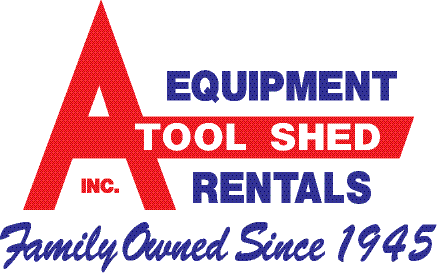-
Discover the Possibilities with A Tool Shed
If you can dream it, we can help you build it. A Tool Shed offers great rental rates on top tool brands. Watch our accompanying video to catch a glimpse behind the scenes at our family owned and operated business. A Tool Shed now boasts seven locations throughout northern California.
We offer all sorts of rental tools and equipment, from heavy-duty forklifts, trenchers, and compactors to lawn mowers, nailers, and drills. A Tool Shed also offers a wide assortment of new and used tools and equipment for sale.
Stop by A Tool Shed today (we’re open seven days per week!) and find out why so many homeowners and contractors trust us . Call (800) 286-6574 if you have a question about our tools available for rent in San Jose or the surrounding areas.
-
Understanding Sandpaper Grit Numbers
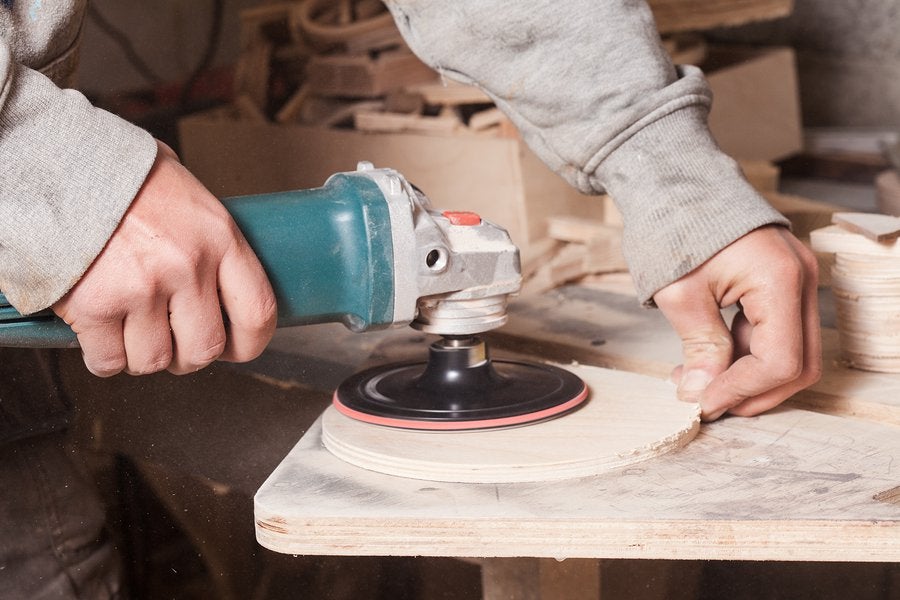
You can use sandpaper on power tools or to sand by hand. If you have a large surface area to sand, you’ll probably want to use a power tool. Power sanders are also a good choice if you have substantial blemishes to remove, or if you need to level or shape wood. Otherwise, sand by hand. If you’re using a power tool, choose a grit number between 36 and 100. Use a grit number between 180 and 320 if you’re sanding by hand. Grit numbers between 100 and 180 work well for sanding with tools or by hand.
The grit number indicates the size of the granules on the sandpaper. The larger the granules, the lower the grit number, and vice versa. Larger abrasive particles remove more wood, but don’t create the fine, finished surface that’s desirable for a completed project. That’s why you’ll want to start with a low grit number, and then move up to a higher grit number to finish off the surface.
A Tool Shed offers all the tools and supplies you’ll need for your project, including sandpaper and power sanders. Call (800) 286-6574 to inquire about used tools for sale in San Jose.
-
Tips for Cleaning Up Water Damage
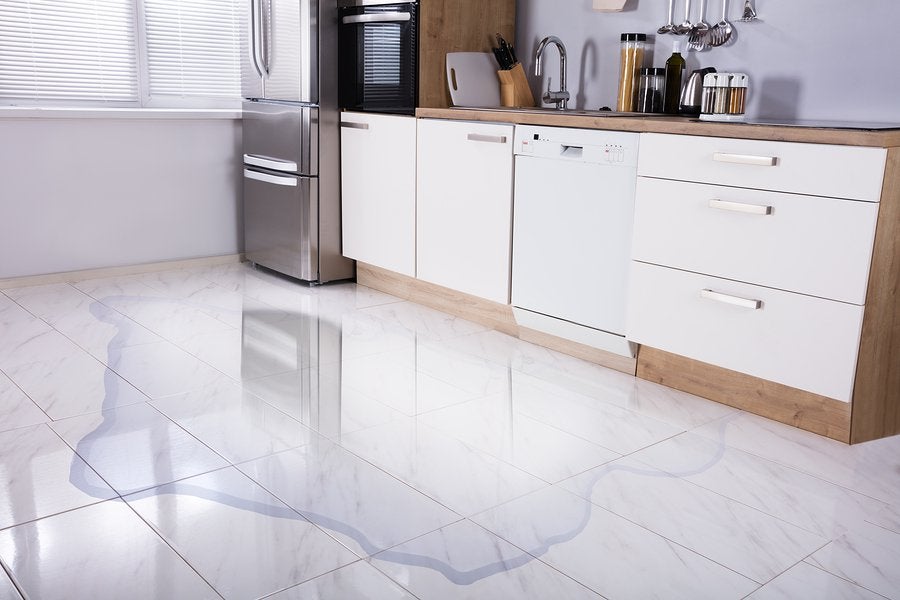
In addition to the cosmetic issues it causes, water damage can lead to mold and serious structural problems that you can’t see. To avoid these costly issues, it’s critical to clean up water damage as soon as possible. If water damage has happened in your home, with the right rental equipment and techniques, you can restore your space to normal while preventing long-term complications. These tips will help you clean up after water damage has occurred.
Use the Right Safety Equipment
If there is standing water in your home, proceed with caution during your cleanup. Flood water and water from burst pipes can contain dangerous bacteria, so wear eye goggles and protective gloves and boots. Before you walk into standing water, ensure that there are no electrical lines in the water, and be aware that floodwater can also contain snakes and other displaced animals. If there is no standing water, safety gear is still recommended, as bacterial contamination will still be possible.
Remove Damaged Flooring and Furniture
Water-soaked flooring and upholstered furniture cannot always be saved, and leaving them in a space you are trying to dry out will increase the moisture in the air. If you have carpet that was exposed to water for an extended period of time, remove it along with the carpet padding. Failing to do so can allow mold to grow. Upholstered furniture should also be removed unless its water exposure was minimal.
Rent a Dehumidifier
It’s impossible to clean up water damage thoroughly without a dehumidifier. Combing a dehumidifier with air movers—which are special kinds of fans that help to draw moisture out of walls—will help you get even better results. Using a dehumidifier will help you avoid secondary damage like mold growth, electrical damage, and warped doors and ceilings.
If your home is affected by water damage, call A Tool Shed in San Jose to rent a dehumidifier and all of the other tools you need to restore your home to normal. Reserve the equipment rentals you need or find out about your affordable used equipment sales by calling (800) 286-6574.
-
FAQs About Scaffolding Safety
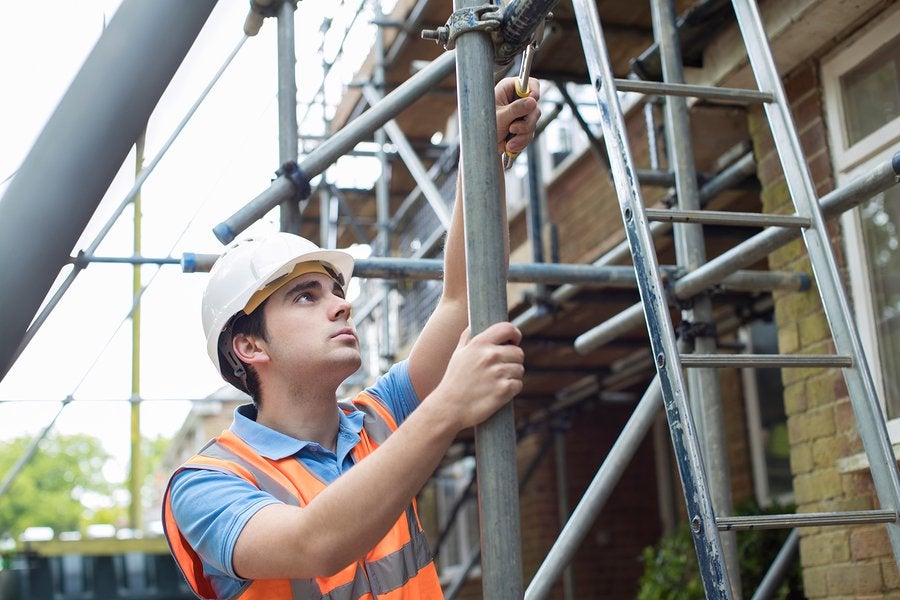
When you rent scaffolding for a project, safety is key. By paying attention to a few basic safety rules, you can get your project done without any injuries or delays. As with any piece of rental equipment, check the safety recommendations for the scaffolding you are using before you start using it. These answers to frequently asked questions about using a scaffold safely will help you avoid problems when you’re working on your project.
What kind of foundation can I put the scaffolding on?
Some scaffolds are designed to use on uneven surfaces—for instance, with one side of the scaffold on the ground and the other side on a step. However, the ground itself should always be flat and free from debris that could make the scaffold unstable. Be sure to read the instructions for the kind of scaffolding you are using to determine which surfaces are safe.
Do scaffolds have to be tied down?
Scaffolding must be tied to a structure for security. Make sure whatever structure you tie the scaffolding to is sturdy and can support not only the scaffold but all of the weight of the people and loads you move across it. Freestanding scaffolding must also be stabilized so that it doesn’t tip and can withstand wind gusts.
How do I increase the height of my scaffolding?
Before you arrange your equipment rental, calculate the height you will need your scaffolding to be. Many kinds of scaffolding offer adjustable height, so you can adapt to the needs of the site. However, if your scaffold is too short, do not try to add height by using a ladder or piling plans on the scaffold base. This dangerous practice puts both the person on the scaffold and anyone on the ground at risk.
A Tool Shed offers a wide range of used equipment and equipment rentals, from tools to scaffolds and forklifts. If you’re not sure which tools you need to rent for your job, let our team help you make the right selections. Make a reservation for equipment rentals in San Jose today by calling (800) 286-6574.
-
A Beginner’s Guide to Circular Saws
If you are doing any kind of woodwork, a circular saw is a must-have tool. You can make just about any kind of cut you want with a circular saw, plus this versatile tool is also user-friendly, even for novices.
Watch this video to learn how to use a circular saw. It’s easy to adjust the depth of your saw for different projects, and using different kinds of blades can help you get the finish you want.
Circular saws are just one of the many equipment rentals we offer at A Tool Shed . For new and used tools and equipment rentals in San Jose, call us today at (800) 286-6574.
-
Using Our Carpet Cleaner Extractor

Are your carpets stained or simply looking dirty and dingy? If so, our carpet cleaner extractor is the perfect tool to get the job done. This equipment rental is available for as little as one hour or as long as a month, depending on your needs. Refresh your carpets and remove stains with this handy, easy-to-use cleaning tool.
To use the carpet extractor, mix an approved cleaning solution according to the instructions on the bottle and add the mixture to the bucket. Adding two ounces of defoamer will reduce excessive foaming. Turn the machine to the “carpet” setting and turn it on. Move across the carpet in strokes, releasing the “activate” button about six inches from the end of each stroke. Empty the bucket and repeat the process as needed.
A Tool Shed makes it possible for you to complete your home improvement checklist without investing in expensive gear with our affordable equipment rentals. When you need tools in San Jose for your project, contact us at (800) 286-6574.
-
Get the Facts About Using a Tow Dolly
Unlike moving dollies, tow dollies are only used for moving vehicles. It’s connected to the back of the towing vehicle, and it only lifts up the front wheels of the vehicle being towed. When you visit the rental equipment store, a staff member will give you all the information you need to use a tow dolly safely and in accordance with the store’s policies.

For example, the vehicle you’re towing and the vehicle you’re driving will need to meet certain weight specifications. Generally, the towing vehicle must weigh at least 1,670 pounds more than the towed vehicle. The vehicle must also have a two-inch receiver hitch rated for at least 7,000 pounds. In addition, you must exercise extreme caution while driving and parking. You will be unable to back up while the tow dolly is connected, as this could damage both vehicles.
You can find tow dollies available for rent at A Tool Shed—with no added environmental fees or sales tax! Call our team at (800) 286-6574 to inquire about renting tools for your car in San Jose.
-
Learn How to Install Carpet on Your Stairs
Once you get into the right rhythm, you’ll find that installing carpet on stairs is easier than you may have expected. It only requires a few specialized tools, which you could rent or purchase used. You’ll need a carpet stair tool, an electric tacker, a carpet knee kicker, and a hammer.
Watch this featured video to see a simple, step-by-step demonstration of installing carpet on stairs. This home improvement expert shows you the proper way to tack down the carpet padding, and how to position the carpet correctly with the kicker and stair tool.
A Tool Shed offers high-quality tools for rent in San Jose, including carpet trimmers, stair tools, and knee kickers . Call us at (800) 286-6574 with your questions about renting tools.
-
Getting the Most from Your Dolly on Moving Day
Moving day is tough enough without having to deal with a thrown-out back and sore arms. Make things easier on yourself by visiting a rental equipment shop for a moving dolly or two. If you’re moving heavy items up or down stairs, choose a dolly with inflatable wheels. Solid wheels work well for rolling heavy items on even surfaces.
Moving the Dolly
It’s a good idea to wear a pair of sturdy work gloves and steel-toed safety shoes when moving heavy items with a dolly. Once you’ve loaded up the dolly, make sure there’s a clear path for it to travel. If it’s a two-wheeled dolly, grasp the handles and tip it back toward your body. At the same time, place a foot on the crossbar to help it move. Push the dolly to its destination—never try to pull it. When you’ve reached the moving van, put a foot on the crossbar while lowering the dolly.
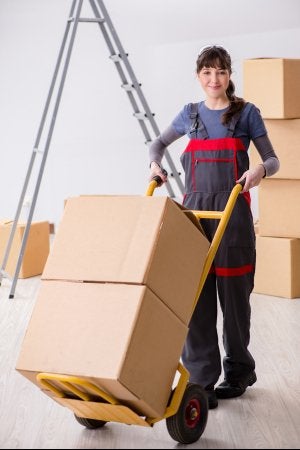
Stacking Boxes
Only stack a few boxes at a time on your hand truck. The stack shouldn’t be so tall that you have trouble seeing over the top. Also, make sure the box on the top is resting against the vertical component of the dolly. Otherwise, it will slide backward when you move the dolly. Place the heaviest box on the bottom of the stack.
Loading Appliances
Moving appliances is far easier when you have a hand truck. Disconnect the appliance from its power source and slide it away from the wall. Pick up the cords and wires, and tape them to the appliance to keep them off the floor. Load the appliance onto the dolly with the rear of the appliance facing you and the dolly. This distributes the weight more evenly so it’s easier to move. It also minimizes the risk of scratching the face of the appliance. Remember to secure this heavy load with a strap !
There’s no need to purchase a dolly when you’ll only use it occasionally. Instead, head over to A Tool Shed, where we offer great deals on tools and equipment for rent in San Jose. Give us a call at (800) 286-6574.
-
How to Prep Your Wall for Painting
If you walk into a beautifully remodeled, newly painted home, chances are you won’t think, “Wow, what a great prep job!” Prepping the walls is definitely not the most glamorous aspect of remodeling. But without the proper prep, the finished results won’t look nearly as spectacular. Take more time than you think you’ll need to prepare your walls before painting, and make sure you have the right rental equipment and tools on hand before getting started.
Protect the floor and furniture.
If you’re working in a small room, you might want to move all of the furniture out so you won’t trip over it. Otherwise, move all furniture to the center of the room, and cover it with plastic tarps. Cover the floor with canvas drop cloths. Protect the trim with painter’s tape, unless you’ll also be painting the trim.
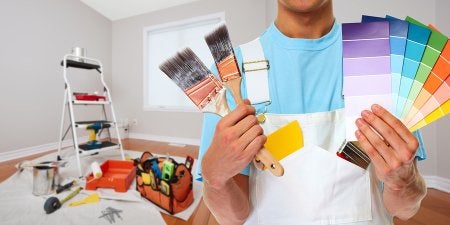
Protect the hardware and light fixtures.
Remove the cover plates from the electrical outlets and light switches. Put the screws in a sealable bag so you don’t lose any of them. Cover the switches with painter’s tape. Next, use small plastic bags and painter’s tape to protect the doorknobs. Even if you aren’t painting the doors, droplets of paint may splatter on the hardware.
Scrape old paint and patch holes.
Check each wall carefully for flaking paint, and scrape it off with a putty knife. You don’t need to remove all of the existing paint—just the loose flakes. Then, use your putty knife to apply spackling paste to any holes in the wall. Smooth it with the putty knife and let it dry. Then, sand the repaired areas until they are perfectly smooth. Use a clean rag to wipe dust off the wall.
Apply primer to repaired areas.
Unless you’re painting directly on sheetrock, you won’t need to apply primer to the entire wall. Do apply primer to any areas you’ve repaired with spackling paste, however. Follow the directions on the product, and allow it to dry. Now, you’re ready to start painting!
Planning a major painting project this summer? Stop by A Tool Shed for the rental equipment you need at affordable prices. You can reach a friendly staff member at (800) 286-6574 if you have any questions about our available equipment rentals in San Jose.
